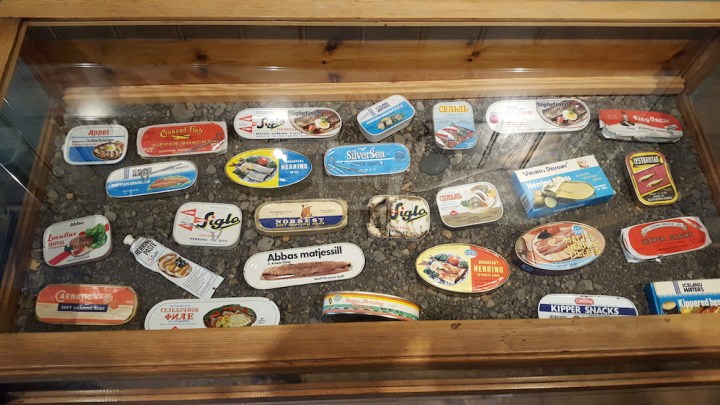The following post was written by 2017 Grosvenor Teacher Fellow Zachary Creech, a high school social studies teacher, after his expedition to Iceland. The Grosvenor Teacher Fellow Program is a professional development opportunity for pre-K–12 educators made possible by a partnership between Lindblad Expeditions and National Geographic Education.

When I set off to Iceland as a Grosvenor Teacher Fellow, I hoped to turn my experiences into an engaging case study for my students. I had no idea that the expedition would lead my students to create case studies themselves!
Case studies are an excellent instrument for teaching that can be used across subject areas. They allow students to dig into learning because they connect complex concepts to the real world.
I had previously used case studies in my human geography class, but had never created my own. As I was developing the case study, I realized the creation process is valuable in itself. It required critical thought and helped me build expertise in a new subject area.
I couldn’t let this opportunity pass my students by; I had to involve them in the process.

My Case Study
I focused on the herring trade in Iceland.
While on expedition, we stopped in a small town called Siglufjörður, which had been the center of Iceland’s herring trade for most of the early and mid-twentieth century. We learned about the herring’s political, social, and environmental impacts on Iceland. Herring helped drive the country’s economy into the modern era, but the story did not end there.
In 1969, the herring population collapsed, resulting in major economic decline for the town of Siglufjörður and serving as a wakeup call across Iceland. Icelanders realized fishing stocks were finite and needed to be protected to prevent similar collapses from occurring.
I was inspired to use this example to illustrate the issues of overexploitation and sustainability in today’s economic and ecological atmosphere.

Student-Created Case Studies
My students were intrigued by the new ideas they explored through my case study.
I challenged them to find a similar example from anywhere in the world that illustrated the concepts of overexploitation and sustainability. They had to show why overexploitation was occurring or had occurred, as well as the environmental, political, and social impacts of that overexploitation. Next, they had to identify potential sustainable solutions and the reasons those solutions had or had not been implemented. I wanted them to understand the complexity of these situations.
I was thrilled by what my students produced. In a week’s time, they were giving detailed presentations on topics as diverse as the overfishing of sea cucumbers and the depletion of groundwater in the Ogallala aquifer. My students also studied historical examples of overexploitation, such as the hunting of the North American bison to near-extinction and agricultural overharvesting leading to the soil erosion of the Dust Bowl.
Through creating case studies on overexploitation, my students took ownership of their learning and became passionately motivated to find solutions to the issues they explored.
Supporting Students in Case Study Creation
The beauty of case studies is that there is no need for an expedition to Iceland; educators across diverse subject areas can use them to bring the world to their classrooms.
I am continuing to develop new case studies based on local and regional issues, such as commercial agriculture and urban revitalization.
Math teachers could connect with a civil engineer and have students calculate the necessary thickness of a dam in order to hold back a flash flood.
Science teachers could use local agricultural extension agencies to teach about local pests and the way farmers in their area have dealt with them.
The possibilities are as vast as the world is.
The key to getting students excited is to model good case studies in class and emphasize real-world connections of concepts. Allow students to choose their area of focus within the larger concept you provide. This ensures students have a stake in the project and understand its relevance.
However, the freedom to choose a topic can be overwhelming to students who aren’t used to researching on their own. If they need ideas or are thinking too broadly, you can give them some options, and they can choose which one to pursue. For example, if my students wanted to study overfishing, I guided them through narrowing it to something specific like overfishing of bluefin tuna in Japan.
Students have to understand a case study is a specific case that is being used to describe a larger problem. It is a snapshot, not the big picture.

Along with supporting students in choosing a feasible topic, I recommend being present in the lab or library while research is ongoing, to provide assistance as they look for sources. When they are ready to prepare presentations, help them make note cards for talking points and cut down the text shown on screen. I showed a TEDx Talk entitled “Death by PowerPoint” to help my students make better presentations. A clearly defined rubric is also critical for making sure the students know what needs to be included.
Using these guiding principles, everyone in education can employ case-study creation to put students at the forefront of learning and discovering for themselves. Through developing their own case studies, my students took ownership of their learning and became passionately motivated to find solutions to the issues they explored.

The Strategy Share series features innovative teaching ideas developed by Grosvenor Teacher Fellows following their field-based experiences on voyages with Lindblad Expeditions.

